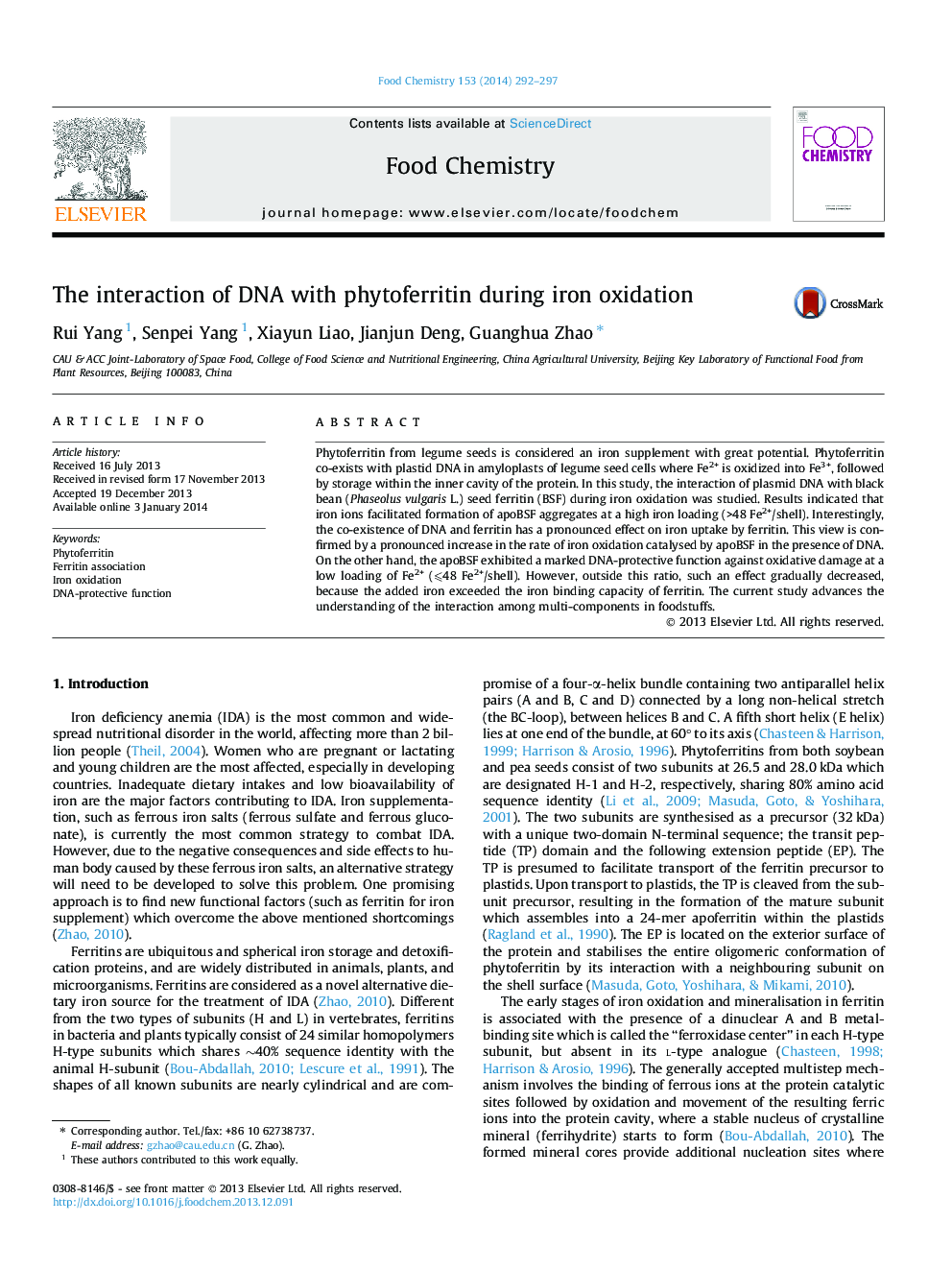| Article ID | Journal | Published Year | Pages | File Type |
|---|---|---|---|---|
| 7598357 | Food Chemistry | 2014 | 6 Pages |
Abstract
Phytoferritin from legume seeds is considered an iron supplement with great potential. Phytoferritin co-exists with plastid DNA in amyloplasts of legume seed cells where Fe2+ is oxidized into Fe3+, followed by storage within the inner cavity of the protein. In this study, the interaction of plasmid DNA with black bean (Phaseolus vulgaris L.) seed ferritin (BSF) during iron oxidation was studied. Results indicated that iron ions facilitated formation of apoBSF aggregates at a high iron loading (>48 Fe2+/shell). Interestingly, the co-existence of DNA and ferritin has a pronounced effect on iron uptake by ferritin. This view is confirmed by a pronounced increase in the rate of iron oxidation catalysed by apoBSF in the presence of DNA. On the other hand, the apoBSF exhibited a marked DNA-protective function against oxidative damage at a low loading of Fe2+ (⩽48 Fe2+/shell). However, outside this ratio, such an effect gradually decreased, because the added iron exceeded the iron binding capacity of ferritin. The current study advances the understanding of the interaction among multi-components in foodstuffs.
Keywords
Related Topics
Physical Sciences and Engineering
Chemistry
Analytical Chemistry
Authors
Rui Yang, Senpei Yang, Xiayun Liao, Jianjun Deng, Guanghua Zhao,
